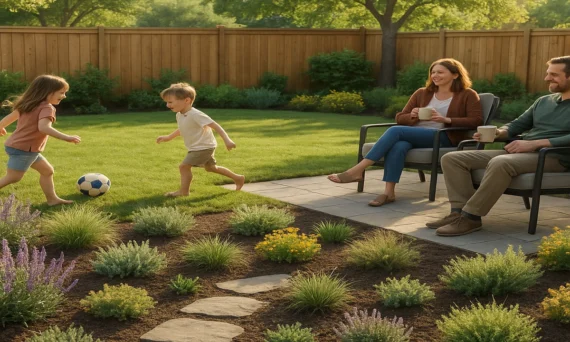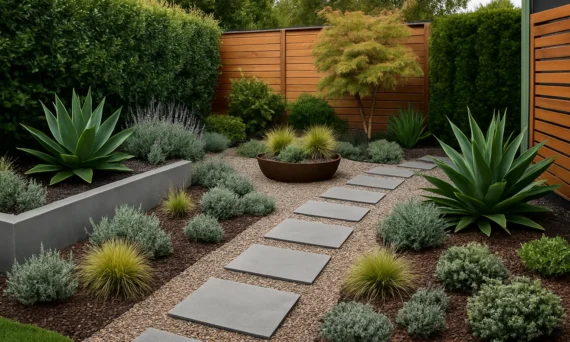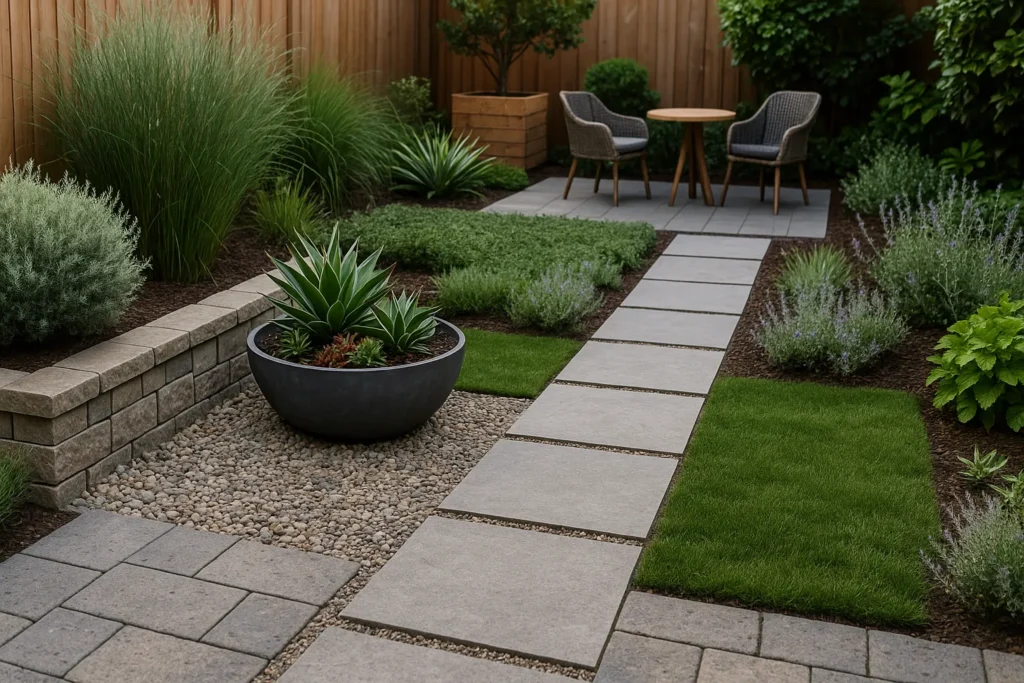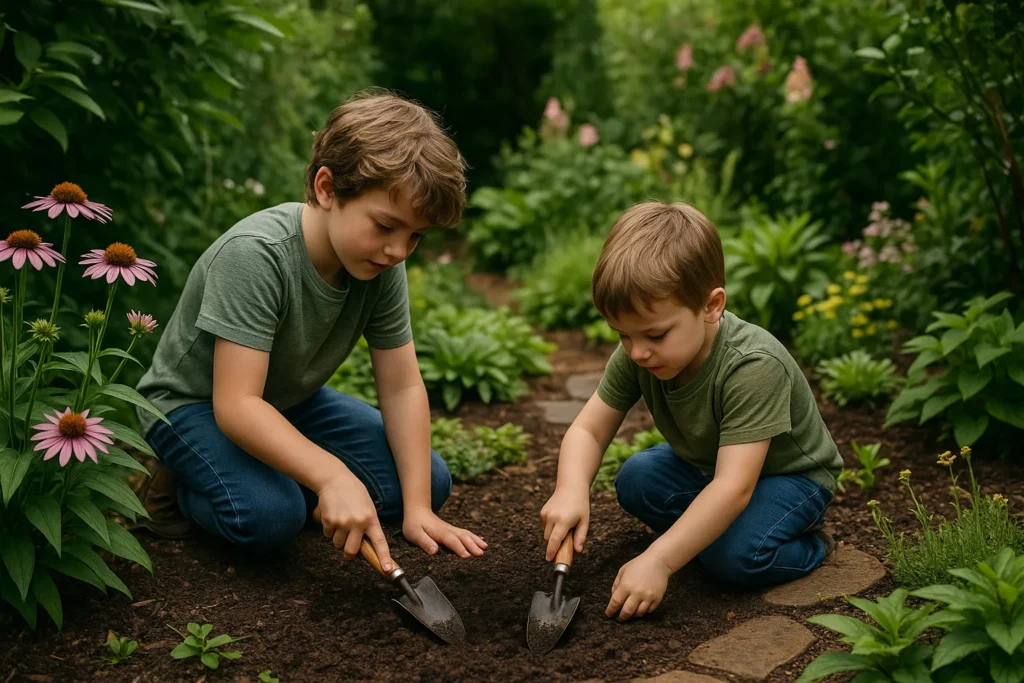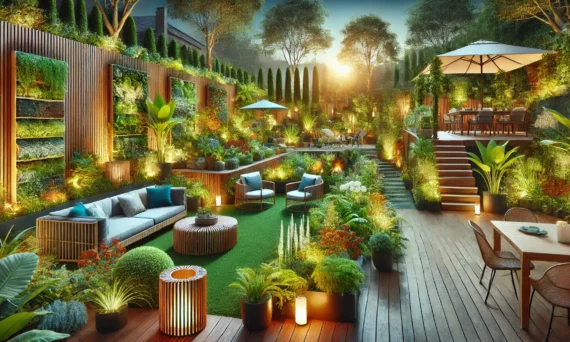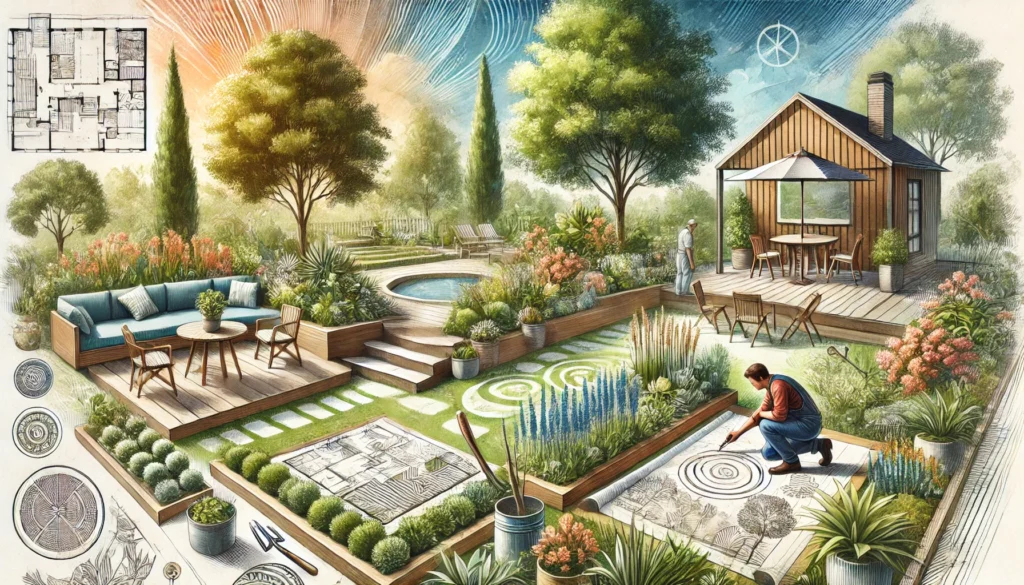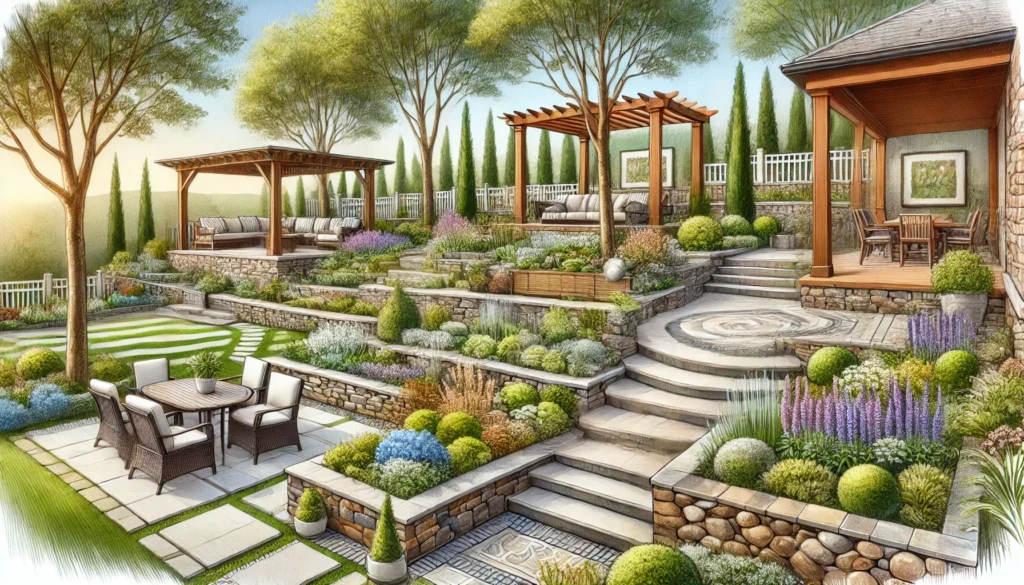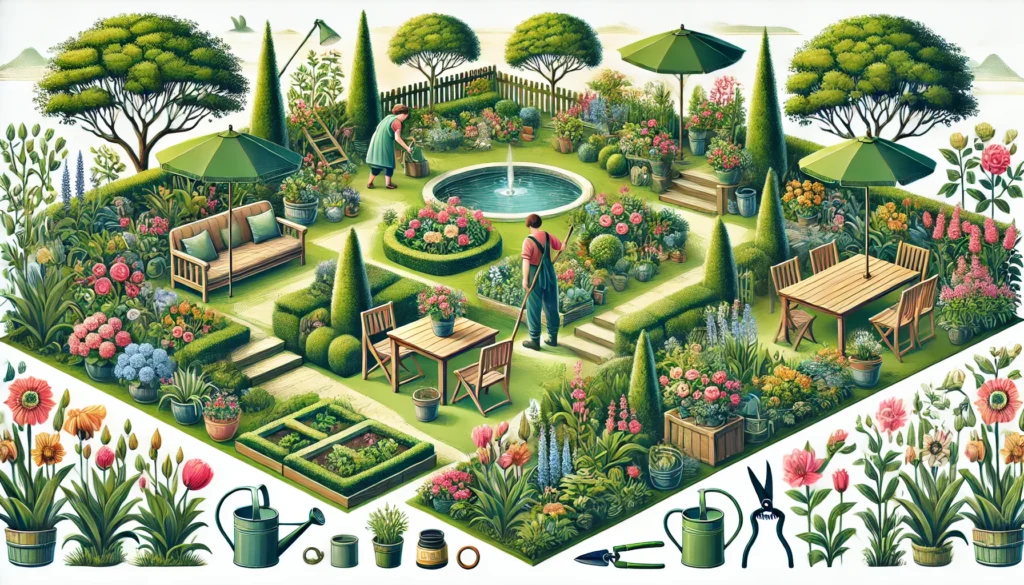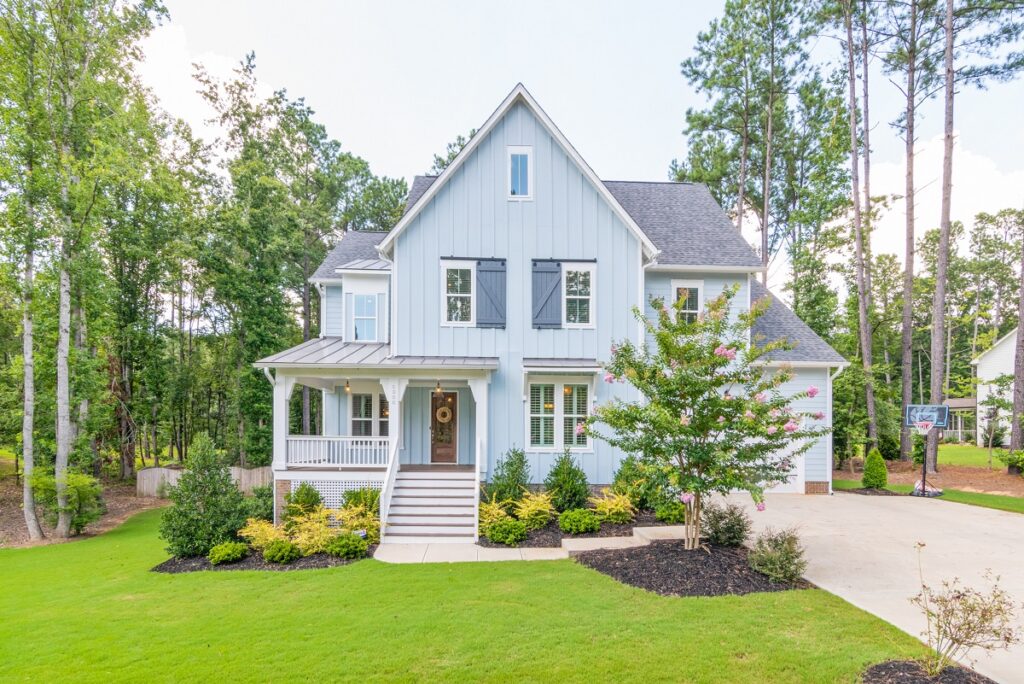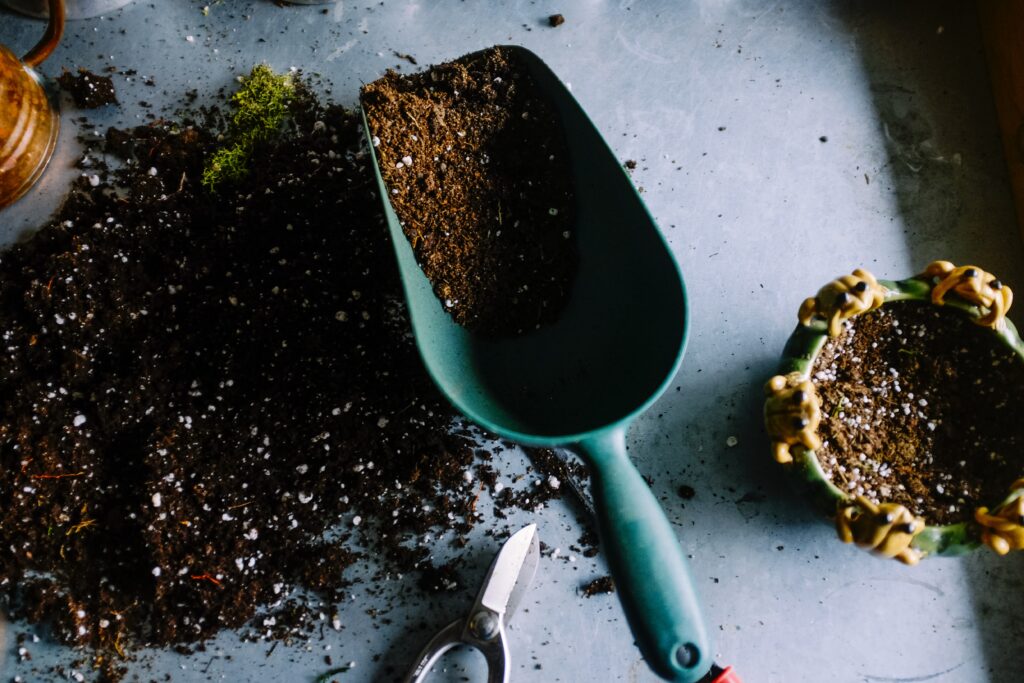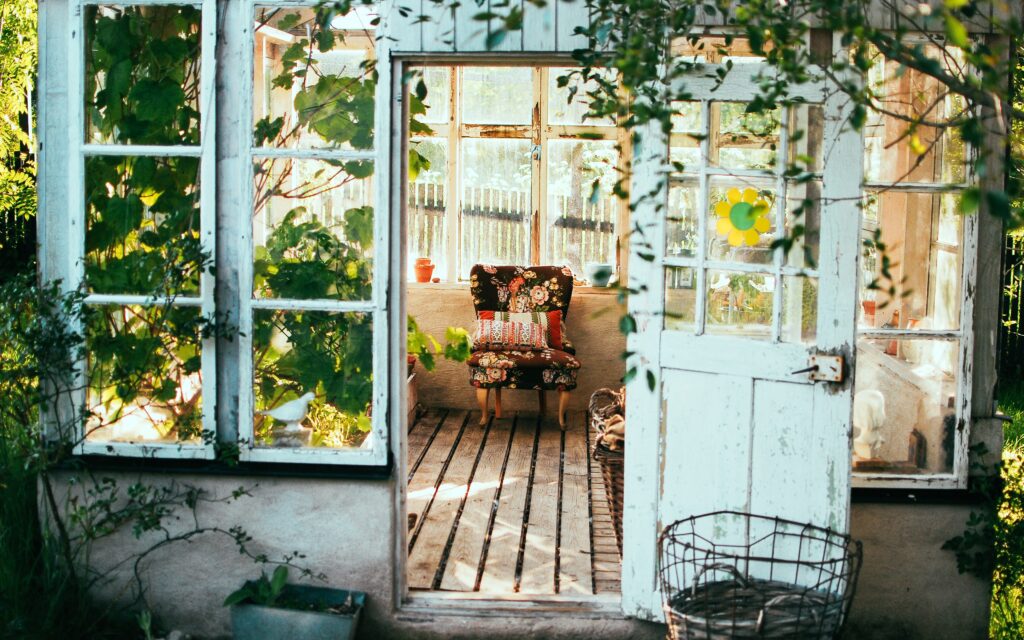The Low-Maintenance Garden Plan You’ll Actually Stick With
A low-maintenance garden shouldn’t feel like a second job. You want an outdoor space that looks great without wasting every weekend with weeding and watering.
Here’s the scary thing: most gardens fail because of a few mistakes that are made even before you plant anything. You plan to grow drought-tolerant plants in wet spots, skip the mulch, and keep a massive lawn that demands mowing every week. Always be careful of these wrong choices.
What if a few simple setup tasks could cut your garden maintenance in half? (Excited, right?)
In this guide, we will tell you about the native plants that grow without difficulty. Then, ground covers that remove weeds, and irrigation systems that do the rest of the work for you.
So, let’s see the idea behind building a garden you’ll actually love.
What makes a garden truly low maintenance?
A low-maintenance garden should only take an hour or two each week to keep the garden looking good.
That specific hour makes gardens that genuinely work. When your plants adapt to your climate and soil, you don’t even have to maintain this time duration then.
For a low-maintenance garden, the placement of your plants is more important. If you stick a lavender plant in moist soil, then you will struggle weekly to take care of it. Now, put that same plant in dry, sandy ground. And see how it handles drought and pests, while you literally do the bare minimum.
The fact is: right plants in the right spots mean strong roots, natural disease resistance, and manageable growth. It saves both the plants and your time, too.
Common mistakes that create more work

Ever wonder why your “easy” garden still eats up every weekend?
Remember that cute little shrub that you planted near the path? Within three years, it will block the whole walkway. Then, you’re out there monthly, constantly trying to maintain it. (Hope you understood now what’s eating your weekend.)
The same thing happens when you place the shrubs near retaining walls. They looked tiny at first, so you stuck them close. One day, they grew massive, and you can’t even walk past without getting scratched.
Landscape fabric seems like a genius idea when you’re at the shop. The packaging promises it’ll stop weeds. (Don’t be a fool easily.)
Suddenly, six months later, you see the weeds sprout right on top of it. They root into the thin mulch layer above the fabric. In this situation, pulling them means fighting that annoying plastic layer. (Congratulations! You’ve actually doubled your work instead of cutting it in half.)
How to design a dream garden that needs less work
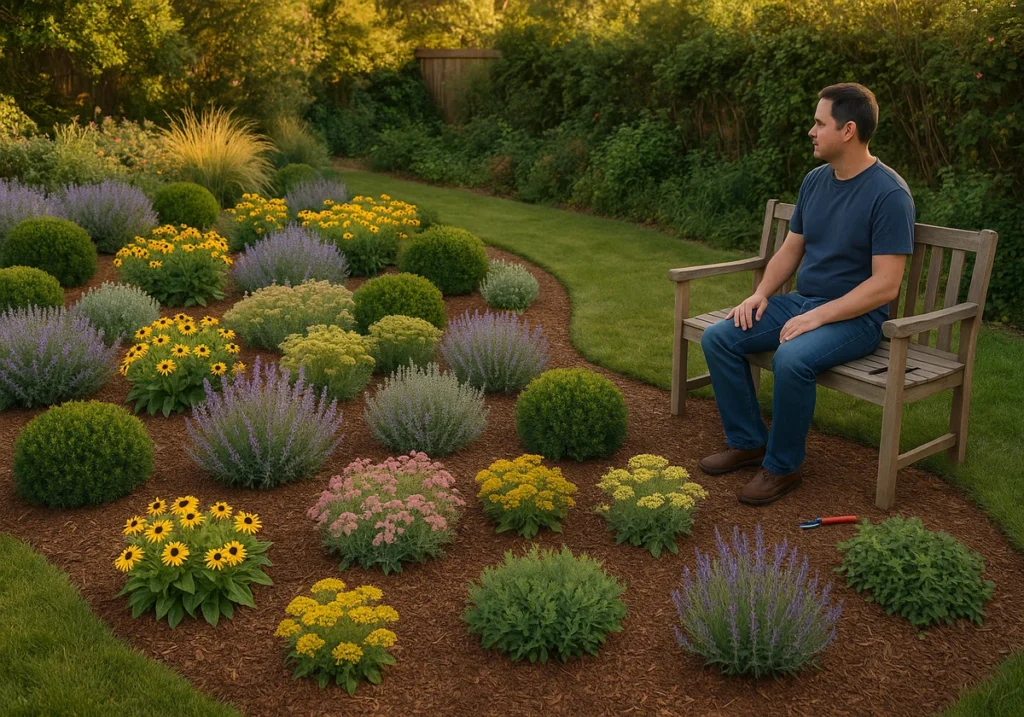
Planning is better than fixing mistakes every single time. Get your garden design right from the start, and you’ll cut maintenance time in half.
Most people rush to the nursery and buy plants without thinking. Then they wonder why their garden demands constant attention. However, a bit of planning changes everything.
Pick plants suited to your conditions
Matching plants to your actual conditions means they’ll grow automatically in all seasons.
Walk around your outdoor space with a notebook to investigate lighting conditions. Then, count how many hours of full sun each spot gets. Later, check if you’re dealing with clay or sandy soil. Also, watch where water pools after the rain.
This homework prevents years of frustration. Plus, plants that are suited to their location naturally resist disease and pests without sprays. They don’t sulk there begging for fertiliser monthly.
Replace the front yard with clover or native ground covers
Regular mowing takes weekends, but ground covers just sit there looking good.
Microclover, buffalo grass, native violet, or creeping thyme skip your mowing entirely. Unlike the grass, which demands mowing weekly during the growing season.
After two years, these alternatives create such thick growth that weeds can’t break through. They also handle hot weather and drought while neighbouring lawns turn brown.
Bees love clover too, so you’re helping pollinators while ditching your mower permanently.
Add hardscaping and permanent paths
Low-maintenance landscaping includes hardscaping for a beautiful space without constant care.
Use gravel, pavers, or decking to replace the garden beds. Otherwise, you’d spend hours weeding your paths every week.
Don’t forget to make your paths wide enough to fit a wheelbarrow comfortably. Those paths look cute at first, but wait until you’re trying to squeeze a bag of mulch. And plants will grab you from both sides.
Best plants for hands-off gardening
Now that you know the design basics, let’s explore low-maintenance garden ideas that actually deliver what they promise.
Native Australian plants that come back year after year
These plants bloom spring after spring without replanting, fertilising, or much watering from you.
Catmint, black-eyed Susans, and sedum pop back up every year like clockwork in your garden beds. No replanting, no struggle. Because native plants already know how to handle your local weather, pests, and soil conditions. (You’re working with nature instead of fighting it.)
And, most of them bloom for weeks without needing deadheading. Instead, it gives you more time to enjoy your outdoor space.
Shrubs instead of high-maintenance flowers
One shrub does the work of 30 annuals you’d otherwise replant every single year.
A decent-sized shrub covers the same ground as 20-30 annuals you’d buy every spring. That saves hours and money on planting.
Evergreen plants like boxwood look sharp year-round without touching them. These shrubs rarely need dividing, and their deep roots find water underground. You simply need to cut them once a year.
Drought-tolerant plants for dry spots
Sun-loving plants that handle drought survive on rainwater alone after their first summer.
During hot weather, lavender, yarrow, and ornamental grasses handle dry patches without weekly watering. After one year, these tough drought-tolerant plants live on natural rainfall. Their deep roots dig down for moisture while you can enjoy weekends doing anything.
Plants you should avoid
Some plants look gorgeous at the shop, but add time-consuming weekly chores that you’ll regret.
For example, Roses demand constant attention with spraying and deadheading. Meanwhile, Bee balm and mint spread aggressively, forcing constant digging to control weed growth.
Our recommendation is to skip pest magnets and high-maintenance plants unless you genuinely enjoy your garden work.
Soil and mulch setup that prevents weeds
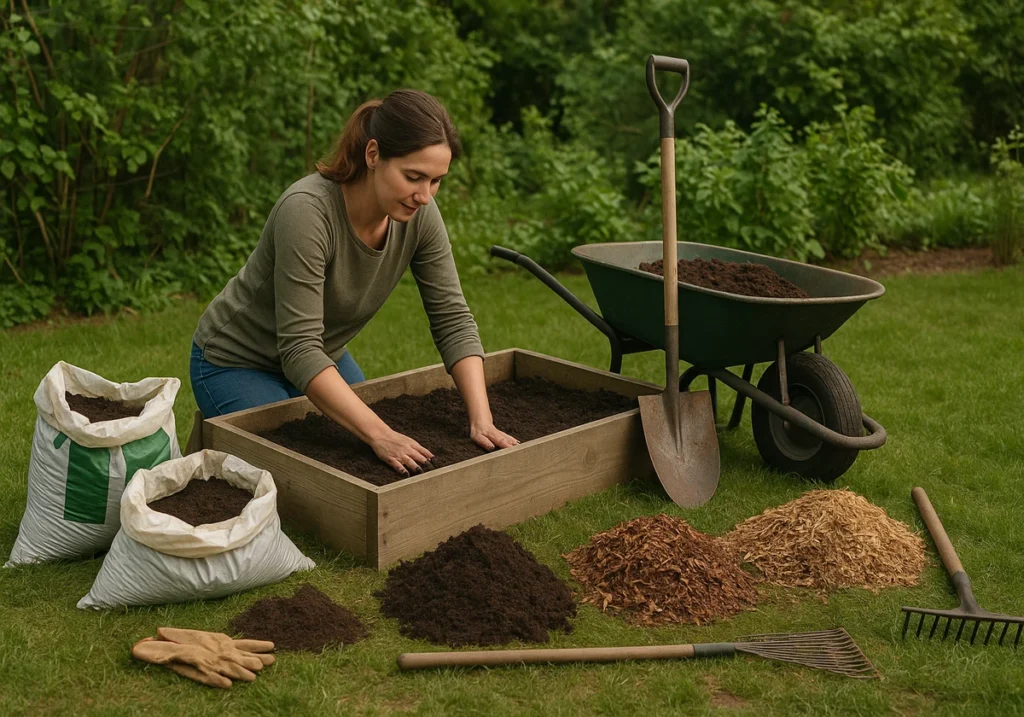
Getting your soil and mulch right at the start changes everything. Do this properly once, and you’ll skip most of the weeding that wastes your weekends.
Most people skip these steps and pay for it later with constant weed growth and thirsty plants in their garden beds.
Build nutrient-rich soil first
Rich soil feeds your plants naturally, so you don’t need to use fertiliser every month.
You can mix compost into your garden beds before planting. This helps soil to retain its moisture longer during dry and hot weather. Sites like Peninsula Compost can tell you more about this.
Apply thick mulch layers
A thick layer of mulch can stop weeds before they start to grow. For mulching, you can lay down 3 inches of wood chips or shredded leaves around your plants each spring.
As a result, it will block sunlight so that weed seeds can’t sprout. It also helps conserve soil moisture between rainfalls.
Final setup tasks that save hours each week
A couple of more quick setups you can follow. Then, you’ll spend more time enjoying your dream garden than working in it.
These tasks require minimal effort but save countless hours maintaining your outdoor space.
Group plants by water needs
Grouping plants by thirst level saves you from dragging hoses all over your garden beds.
Put thirsty plants together in one spot and drought-tolerant ones in another. So you’re only watering the zones that actually need it. That’s how less water usage and less effort make better results for every plant.
Install drip irrigation systems or timers
Irrigation systems with timers automate watering so you forget about it completely.
Drip irrigation delivers water right at plant roots instead of spraying everywhere. This means plants receive exactly what they need with zero waste.
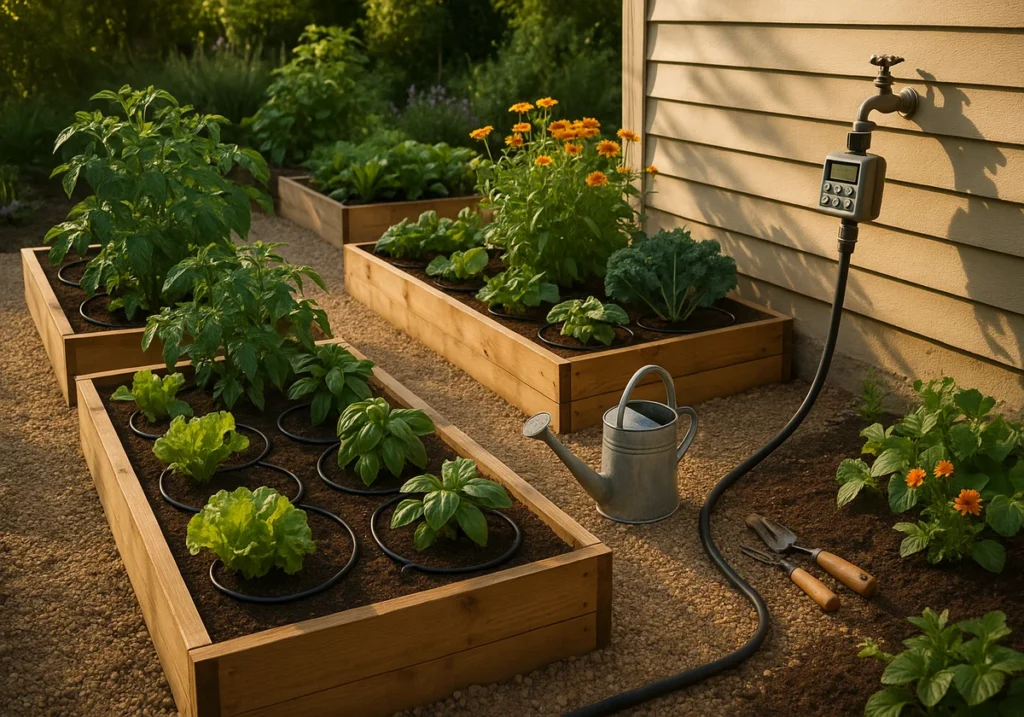
Start your low-maintenance garden today
Building a low-maintenance garden starts with the correct choice. A few native plants, thick mulch, and an irrigation system can change your outdoor space into something amazing with minimal effort.
You are still confused about how to plan all this? Here we are at Peninsula Compost, creating landscaped gardens with beautiful designs, focusing on the people who will enjoy them.
So, don’t forget to reach out to us if you are struggling with your low-maintenance garden planning.
